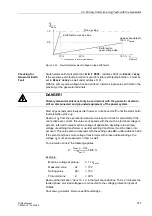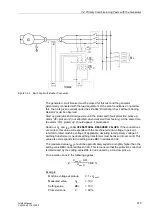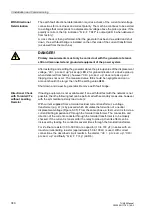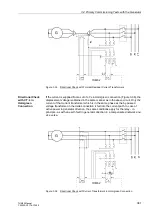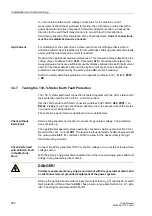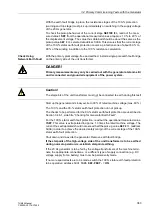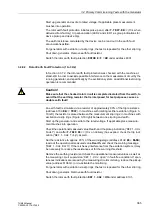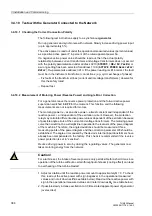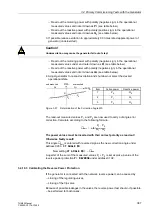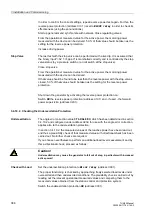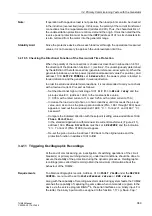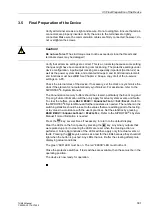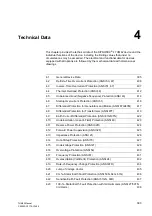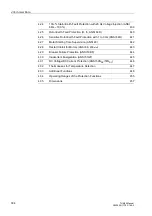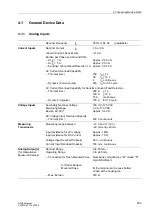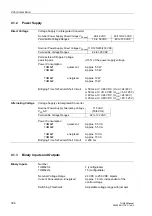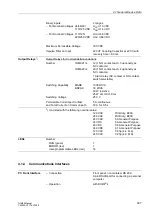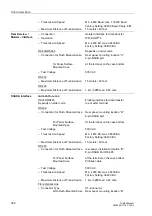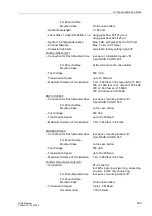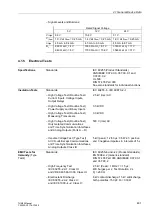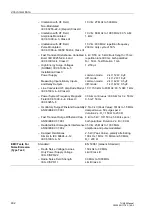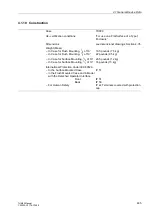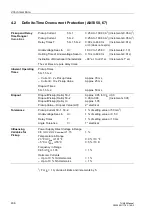
3.5 Final Preparation of the Device
391
7UM62 Manual
C53000-G1176-C149-3
3.5
Final Preparation of the Device
Verify all terminal screws are tight and secure. Do not overtighten. Ensure that all pin
connectors are properly inserted. Verify the wires to the terminals are tightly
connected. Make sure the communication cables are firmly connected; however, do
not overtighten the screws.
Verify that all service settings are correct. This is a crucial step because some setting
changes might have been made during commissioning. The protective settings under
device configuration, input/output masking are especially important (Section 2.2) as
well as the power system data, and activated Groups A and B. All desired elements
and functions must be set
ON
. See Chapter 2. Keep a copy of all of the in-service
settings on a PC.
Check the internal clock of the device. If necessary, set the clock or synchronize the
clock if the element is not automatically synchronized. For assistance, refer to the
SIPROTEC
®
4–System Manual.
The Annunciation memory buffers should be cleared, particularly the Event Log and
Trip Log. Future information will then only apply for actual system events and faults.
To clear the buffers, press
MAIN MENU
→
Annunciation
→
Set/Reset
. Refer to
the SIPROTEC
®
4 System Manual if further assistance is needed. The numbers in the
switching statistics should be reset to the values that were existing prior to the testing,
or to values in accordance with the user's practices. Set the statistics by pressing
MAIN MENU
→
Annunciation
→
Statistic
. Refer to the SIPROTEC
®
4 System
Manual if more information is needed.
Press the
key, several times if necessary, to return to the default display.
Clear the LEDs on the front panel by pressing the
key. Any binary outputs that
were picked up prior to clearing the LEDs are reset when the clearing action is
performed. Future illuminations of the LEDs will then apply only for actual events or
faults. Pressing the
key also serves as a test for the LEDs because they should all
light when the button is pushed. Any LEDs that are lit after the clearing attempt are
displaying actual conditions.
The green “
RUN
” LED must be on. The red “
ERROR
” LED must not be lit.
Close the protective switches. If test switches are available, then these must be in the
operating position.
The device is now ready for operation.
n
n
n
n
Caution!
Do not use force! The stud torque must not be exceeded, since the threads and
terminal screws may be damaged!
ESC
LED
LED

